 United States of America (1950)
United States of America (1950)
Medium Tank – 8,576 Built
First real postwar US MBT
The M47 was a relatively short-lived MBT (then called “medium tank” created to replace the M46 Patton/M26 Pershing and the M4 Sherman). It was widely produced to fit the needs of the US Army, US Marines, but also NATO nations as a whole as a stopgap measure before new models could be built locally.
| Hello dear reader! This article is in need of some care and attention and may contain errors or inaccuracies. If you spot anything out of place, please let us know! |
Although a good all-over tank, the M47 Patton was used only for a few years, before its replacement by the M48 in 1953 which was really a generation ahead. Declared obsolete in 1957, the impression it left and service time nevertheless far outlasted the fifties under other colors. The Soviet T-54 was modified to face it and the M47 defeated many foreign-built models with success, even taking part in massive tank battles.
Development history
The M47 was not even conceived when the T42 was in development, to be the real replacement for the Pershing and its M46 upgrade and the whole fleet of M4 Shermans still in service in 1950. The T42 was intended as a real departure from previous designs, but soon development problems emerged. At least six issues were detected and the production was still not in view.
By that time, the Korean war erupted, and it was sought that there was no time to fix them. So a stopgap measure was taken. A new prototype tank would be built, the M46E1, marrying the M46 hull (modified) and the T42 turret. Detroit tank Arsenal was put in charge of the final design, and the production was scheduled to start in June 1951, and the first tanks rolled off the factory line and entered service soon after.
Design
The M46 hull, engine, transmission, drivetrain, were kept with few modifications. The hull had long storage bins which protruded on both sides and halfway across the engine deck. The turret ring was enlarged and received a needle-nose design which better protected its front base. The hull received a front bow machine-gun, the usual M1919A4 Browning cal.30 (7.62 mm) machine-gun, in a ball mount. The M47 Patton was also the last US medium tank to feature a bow machine-gun. Armor was 4 in (100/102 mm), with a well sloped front beak.
The engine was an improved Continental AV-1790-5B V12, air-cooled, Twin-turbo gasoline giving 810 hp (600 kW). Despite the same overall 48.6 ton weight, the weight ratio was more favorable, at 17.6 hp/t versus 18.4 hp/t. The transmission was also the same General Motors CD-850-3/4, with 2 speeds forward, 1 reverse. Fuel capacity was 233 US gal (880 liters or 194 imperial gallons), giving an operational range of 100 miles (160 km) on average with a mix of road/off-road terrains, equivalent to the M46. Top speed was however far greater at 37 mph versus 30 mph (60 vs 48 km/h) on its predecessor.
The drivetrain comprised exactly the same roadwheels, tracks and torsion bar/shock absorbers system arrangements based on the 1943-44 prototypes which led to the M26 Pershing, but with the extra pair of track tensioners at the rear featured on the M46: Seven doubled roadwheels and three return rollers instead of five, plus the rear drive sprockets per side. Shock absorbers were fitted to the front and two rear roadwheels pairs. The standard track links received rubber shoes. Longer mufflers on rear fenders were also fitted.
The real change was the much roomier and higher turret, characterized by a long rear bustle, well protected, which sloped sides which gave its characteristic “pear” shaped section. The turret was also fitted with an M12 stereoscopic rangefinder which protruded on both sides. This new system, which will become a standard, improved first-round hit probability but was somewhat difficult to use. The main armament was constituted by the upgraded 90 mm M36 (replacing the M3A1) with 71 rounds distributed along the hull and turret, with 8 ready to use at hand for the loader.
Secondary armament comprised a coaxial cal.30 M1919A4 (7.62 mm), and a cal.50 (12.7 mm) located on the roof, near the commander cupola, and fitted with optional AA sights.
Production
The production set up accused delays due to shipments of the new M12 rangefinder, and testings were prolongated due to emerging problems with a rushed conception. Standardization came eventually in may 1952, and the production started at Detroit Tank Arsenal, which delivered 5,481 tanks, quickly joined by American Locomotive Company (Alco) with 3,095 more, for a total of 8576. The M47 was sometimes called “Patton II” to make a difference with the M46.
Variants
M47M – The much improvement model started in the late 1960s. This tank featured the engine and fire control elements from the M60A1 and the assistant driver’s position was eliminated (for more 90 mm ammo). Apparently, 800 of these modified vehicles were produced for export and sold to Iran and Pakistan. Later on in the 1980s, Iran devised its own modernization program called the Sabalan. This version had full side skirts, a completely rebuilt turret fitted with a 105 mm gun, a modern laser range finder, and a new fire control system and communication equipment.
-The M47E was a Spanish M47M in austere version: still fitted with the original fire control system.
-The M47E1 was a second local Spanish upgrade batch with rearranged main gun ammunition storage and crew heater. It became a standard and in all 330 were so converted.
-The M47E2 was another Spanish variant, basically a M47E1 with the new Rh-105 105mm gun and an improved electromechanical but improved FCS, but also a passive night vision sight the for driver and commander. 45 were so converted but retired in 1993.
-The M47ER3 was a Spanish armored recovery vehicle. 22 were reconstructed and served until the 1990s. They were sub-distinguished between the M47ER3M and M47ER3L according to the tanks they assisted.
-The American M6 was a “dozer kit” for an Earth Moving Tank Mounting Bulldozer conversion for the M47 series.
Exports
NATO : The M47 was the cornerstone of the Western European Defence for years, until 1960 and before their replacement by the M48. By importance, they were Italy (2480), West Germany (1120), France (856), Belgium (784), Greece (396 -later, including former West-German tanks, decomm. in 1992-95), Spain (389 -see variants), Portugal (161), Austria (147). Switzerland received two for evaluation.
SEATO :
South Korea received 531 tanks. 463 for the army (1956-1959) and 68 for the Marines (1963-1964). They were used actively and upgraded with the new US 90mm M41 main gun until the late 1990s before going into reserve in the 2000s. The last were decommissioned in 2007. Japan received one for evaluation, which had some influence on the design of its first postwar tank, the Mitsubishi Type 61.
Others : Surprisingly enough, Yugoslavia, then at the peak of its autonomy from the Soviet sphere, received no less than M47 319 Pattons by a decision of U.S. President Dwight D. Eisenhower which feared a Soviet invasion of the Country by the Hungarian border in the 1950s.
Turkey, firmly in the US sphere of influence also received 1347, in several batches, the 1960s being former west-German tanks. All M47 were scrapped and their steel recycled for civilian use.
In the Middle East and Africa, these were Iran (400), Saudi Arabia (131), Jordan (49), Ethiopia (30) Somalia (25, ex-Saudis), and Sudan (17, ex-Saudis). In Asia, Pakistan was also an early known user, with some 400 tanks which fought actively (see later).
The M47 Patton in action
In US service
The first units equipped were the 1st and 2nd Armored Divisions of the US Army until summer 1952. The From 1951 to 1953, the M47 was frontline, but in 1955 it was declared a limited standard, a gradually replaced by the M48 (which started already in 1953). By 1957 it was declared obsolete, but nevertheless was left in service with infantry division battlegroup assault gun platoons (four each), and later in reserve units. In 1960-63, they were withdrawn completely (replaced by the SS-10 anti-tank light truck) and sold abroad, kept in storage or scrapped.
The US Marine Corps received its own M47s in late 1952. They were seven Marine tank battalions, three divisional, and two reserve training, and two force level. The last were withdrawn completely from active duty much later, in 1959. Exports, however, started sooner, in the mid-1950s. They apparently never fought in Korea and did no appearance in Vietnam, but their career was far more active abroad.
Indo-Pakistani War of 1965.
Pakistani M47s were around 400 in service by the time of this war, 15 armored cavalry regiments, each with about 45 tanks in three squadrons. They took part actively (and decisively) in the Pakistani 6th Armoured Division victory at Chawinda, the push of the 1st Armoured Division at Khem Karan (Operation Windup). But however, they took tremendous losses at the famous Battle of Asal Uttar (Indian for “Fitting Response”). The area was even called later Patton Nagar (“Patton’s town”) due to the number of M47s knocked out or captured (ninety-seven M47, M48, and Shermans). The Pakistani M47s served long after the war, being retired in the early 2000s.
Six Day War (1967).
Jordan used its 49 M47 Pattons during the assault against Israel (“Operation Khaled”) with the planned captured of Motza and Sha’alvim along the strategic Jerusalem corridor. These were part of the 11 armored brigades (300 tanks) which took part in the operations.
Turkish invasion of Cyprus 1974
An estimated 200 M47 Pattons took part in the operation in the summer of 1974, at least one was captured by the Cyprus National Guard and is now a memorial.
1980s Iran-Irak war
Iranian M47s were heavily engaged during this conflict, despite their age. The war experience conducted the Iranian army to engage a drastic modernization program which came out as the Sabalan. These tanks are still frontline today.
War against the PKK (1980s)
Turkish M47 took part in the fight against PKK insurgent guerillas along the Turkish-Iraq border. They were later replaced in the early 1990s by the M48A5.
The Somalian Civil War (1991)
Somalia acquired before the war some 25 second-hand M47 Pattons from Saudi Arabia (date unknown). But they were quickly worn out due to the lack of maintenance and spare parts.
Croatian War of Independence (1995)
The Croatian army was largely equipped with US-built tanks along with other models and had some 20 M47 active during their operations against the Bosnian Serbs. However, the 16 remainder after the war were quickly withdrawn and used for target practice.
M47 Patton links & resources
M47 Patton specifications |
|
| Dimensions (L-W-H) | 27’9″ (20’7″ without gun) x 11’5″ x 9’7″ ft.in (8.5m (6.3m) x 3.51m x 2.95m) |
| Total weight, battle ready | 48.5 tons (96 000 lbs) |
| Crew | 5 (Commander, Driver, Assistant driver, Loader, Gunner) |
| Propulsion | Continental AVDS-1790-5A V12, AC Twin-turbo gas. 810 hp. |
| Transmission | General Motors CD-850-3, 2-Fw/1-Rv speed GB |
| Maximum speed | 30 mph (48 km/h) on road |
| Suspensions | Torsion bars |
| Range (Fuel) | 80 miles/130 km (878 Liters/ 232 US Gal.) |
| Armament | Main: 90 mm (3.5 in) gun M3A1, 70 rounds Sec: 1 cal.50 M2 (12.7 mm)+ 2 cal.30 (7.62 mm) Browning M1919A4 |
| Armor | Max: Nose glacis 102 mm (4 in) |
| Production (estimated) | 8576 |
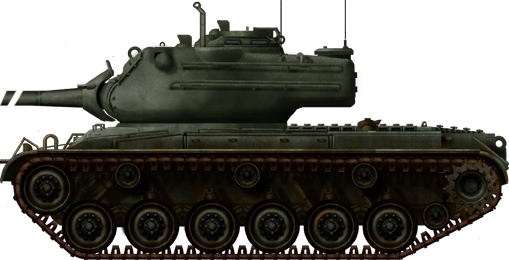
Early production, Detroit Tank Arsenal, USA, 1951.
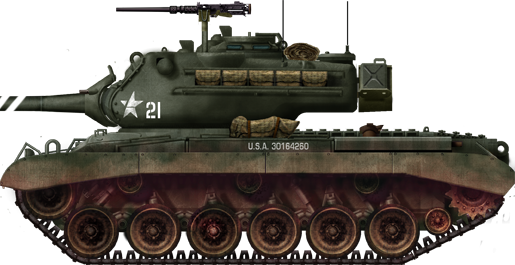
M47 Patton with dust shields, training, 1953.
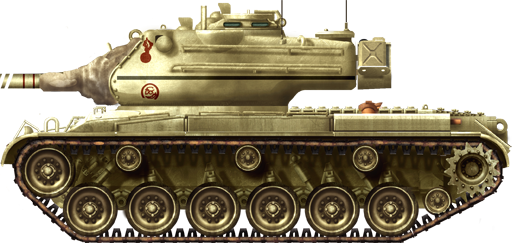
French M47 8th Dragoons Regiment, Suez, 1956.
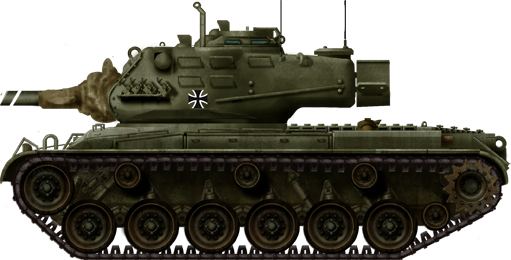
West German M47 Patton, Bundeswehr, 1958.
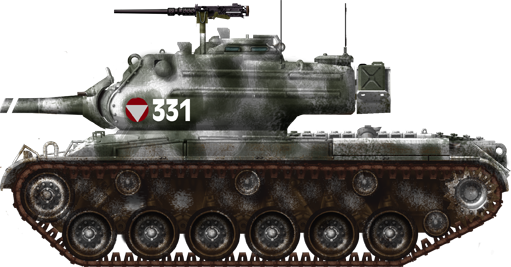
Österreichisches BundesHeer M47, Panzerbatallion 4, winter exercizes, 1966.
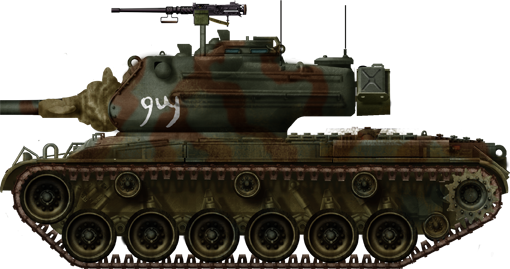
Pakistani M47M, battle of Asal Uttar, 1965.
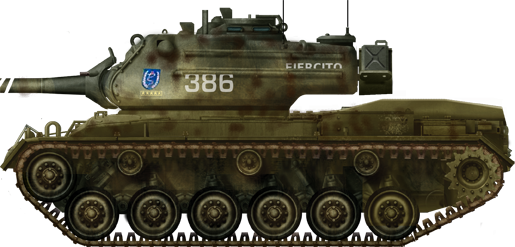
Spanish M47E in the 1970s.
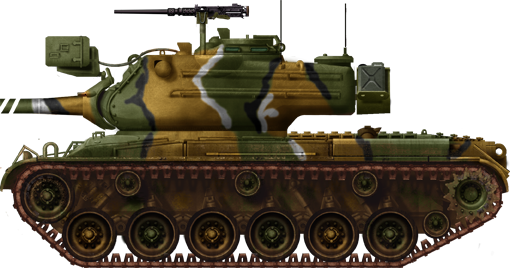
South Korean Army modernized M47 Patton, 1980s.
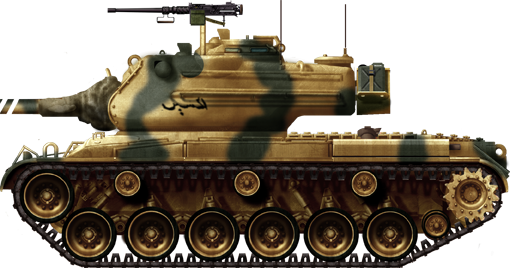
Jordanian army M47M, 6-days war, 1967.
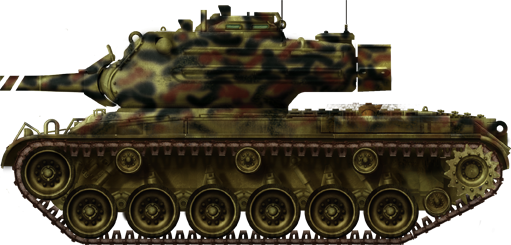
Croatian M47 Patton, Bosnia Herzegovina, 1993.
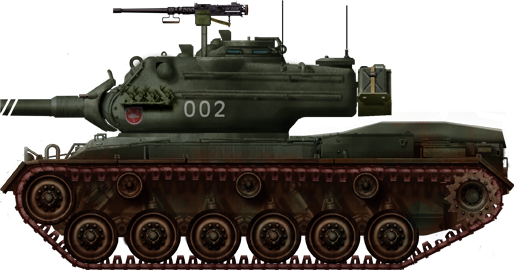
M47E2 from the Spanish Ejercito, late 1980s. This was one the lastest evolution of the Patton. These were deactivated in 1994.
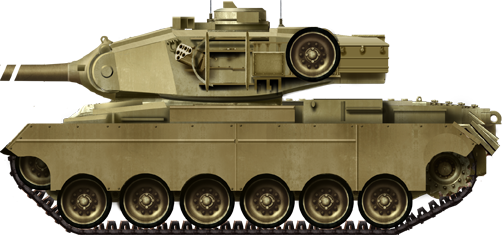
The very latest evolution M47 Patton, The Sabalan, is a complete rebuilding by the Self-Sufficiency Jihad Organization of the Iranian Army Ground Force (2012-2014). Finding photo evidence does not tell a lot about the rear part of the turret, so this is only a possible reconstitution.

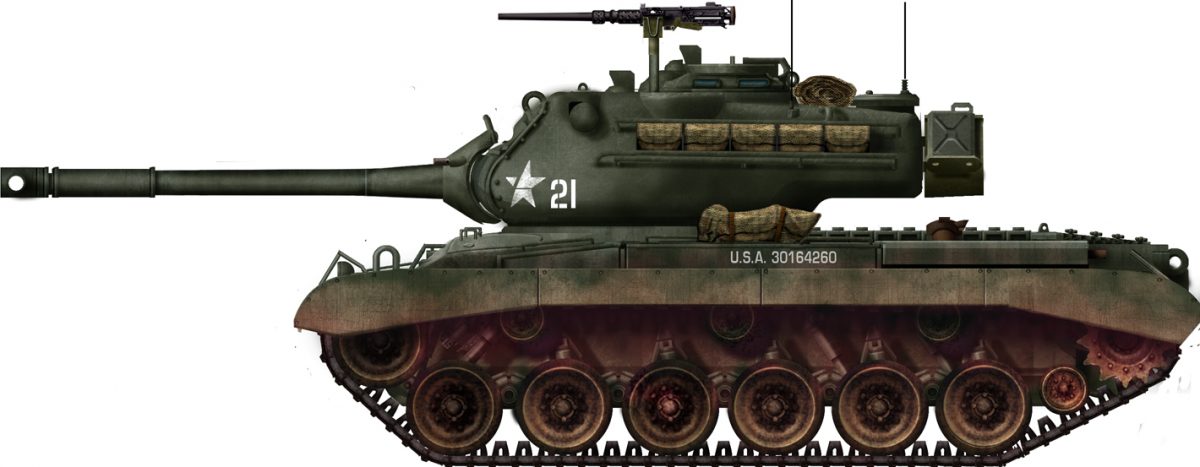
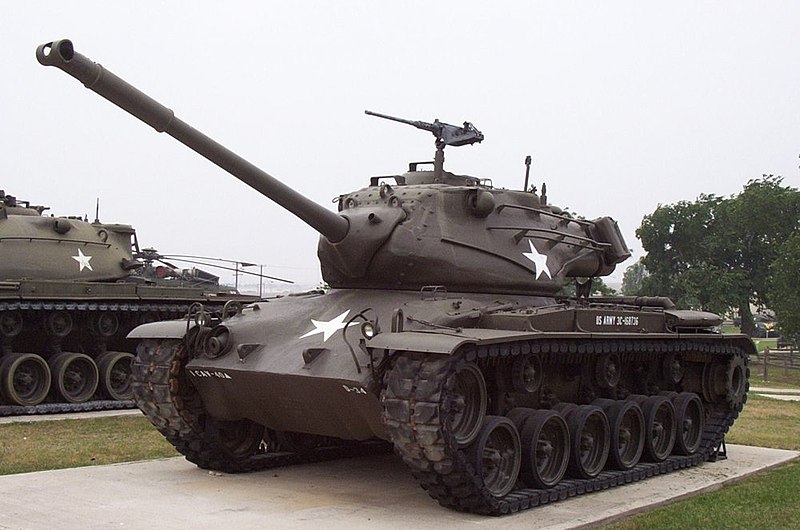

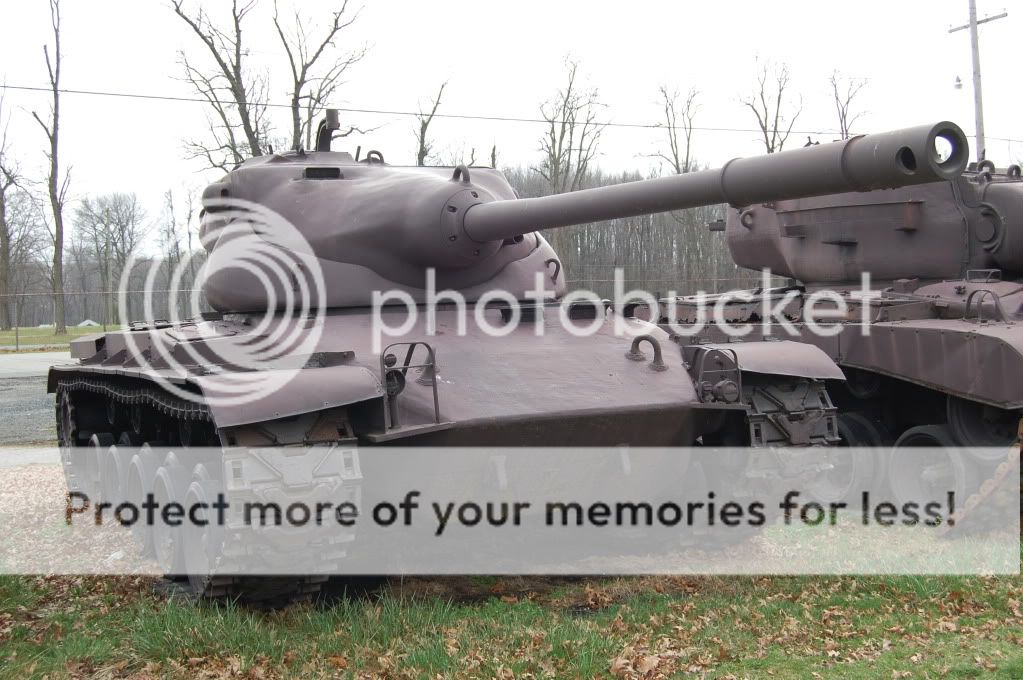

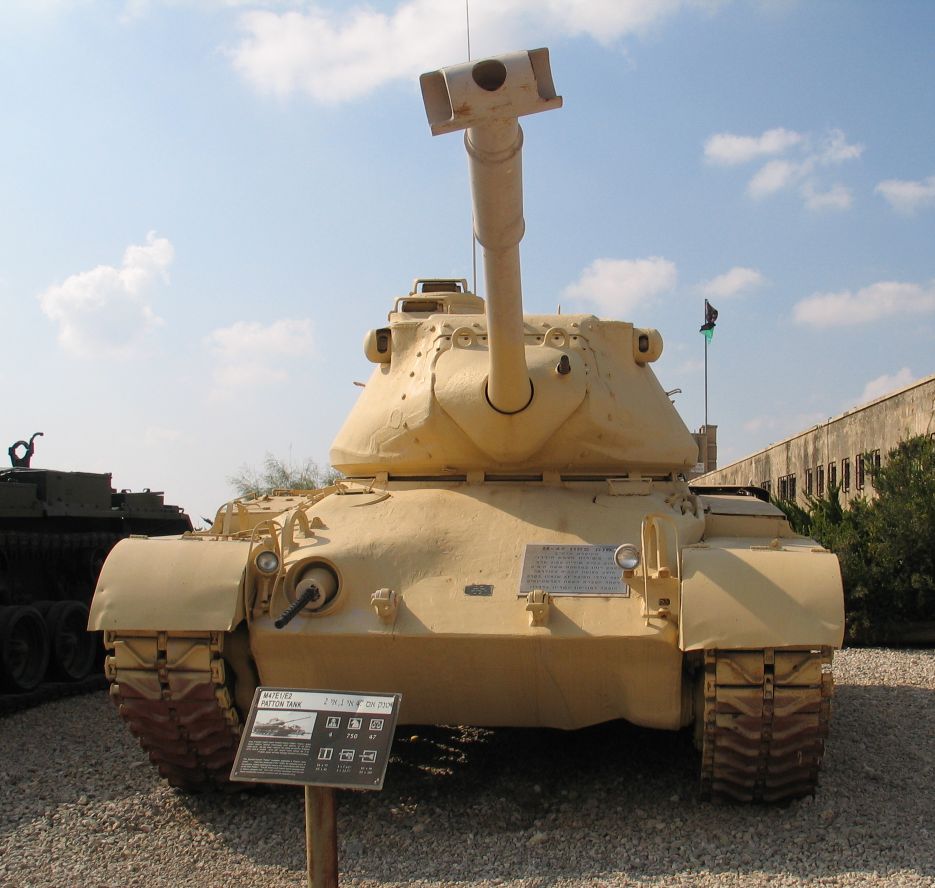
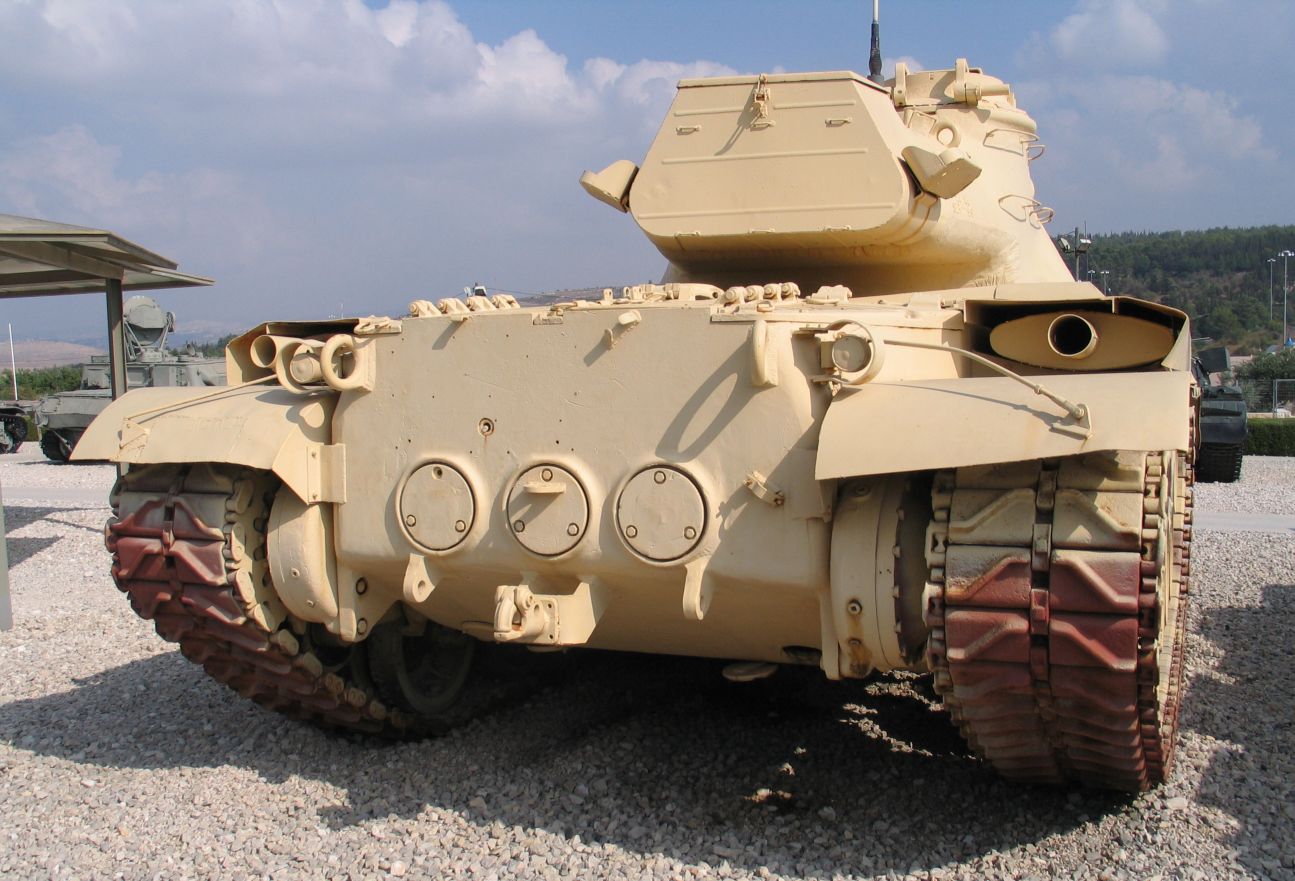

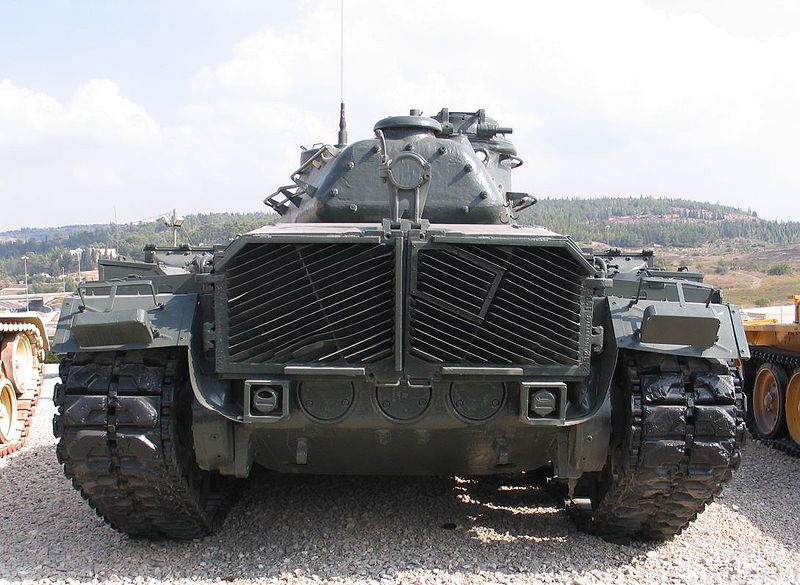



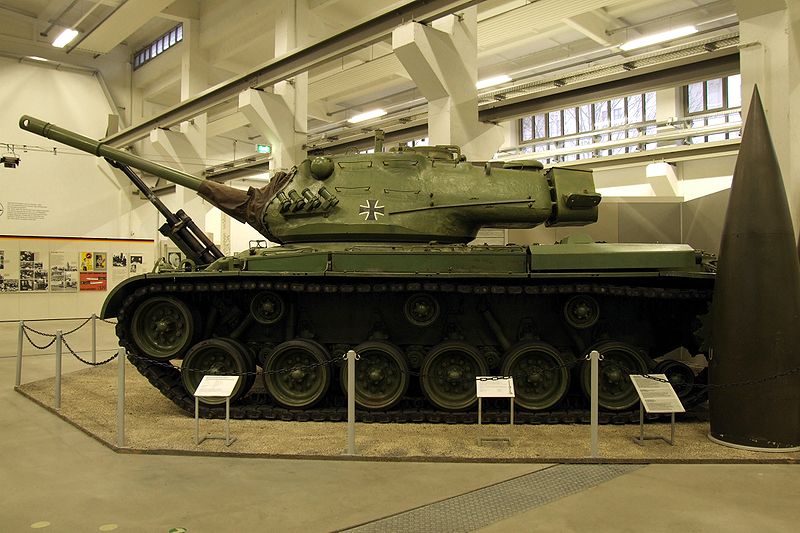
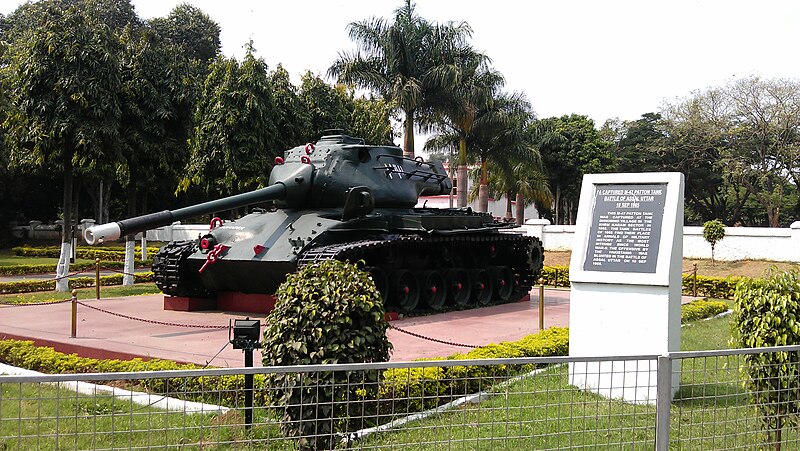


10 replies on “90mm Gun Tank M47 Patton II”
Hi,
Iran recently announced their new upgraded M47 tank they called ‘Tiam’ http://defence.pk/threads/tiam-the-second-upgrade-on-irans-m47-tanks.426824/.
They now have at least two M47 upgrade prototypes, the Sabalan and Tiam.
The M47 hull has been mated with what appears to be T-55 or Type56/69 turret, plus ERA. But apparently the ERA arrangement in frontal part of the turret is blocking the coaxial machine gun (?).
In my opinion, the previous Sabalan upgrade is more promising than that strange thing…
Hi
Indeed it looks like a M47/Zafir 74 hybrid.
Wait and see…
Thanks for this info anyway !
All the best
Did the U.S ever have M47 with 105mm guns?
No
As far as I know the only M47s to carry 105mm guns were the Spanish M47E2, which mounted the Rhientmetall 105-30.
I build 1:35 models. Now I have a new M-47M / E manufacturer Takom, number 2072.
The kit includes decals version 2x Iran, 3x Spain. Both states used a different end of the cannon (muzzle brake). Is it possible to say when and what muzzle brake was used? Mark time, production series M47? According to the photos on the M47 Patton versions, three breake variants. We have Patton Jordanian version in Czech Republic Lesany museum. Brake, two holes left / right on the cannon. Not the _T_ shape. I like Family Pershing / Patton, interesting AFV tanks. THX. Eduard Pavlik, Czech Republic.
“Iraq” is misspelled as “Irak” on the Iran-Iraq War section of the operation history section
Nice and informative.
You might want to re-write the following sentence that begins the under the subheading “Production” –
“The production set up accused delays due to shipments of the new M12 rangefinder, and testings were prolongated due to emerging problems with a rushed conception.”
Perhaps:
Problems setting up a production line for the M47’s innovative M12 rangefinder led to delays in manufacturing the new tank. In addition, the rushed nature of the M47’s design included a number of flaws that appeared only during the tank’s acceptance testing. Consequently, it took much longer than originally anticipated to begin delivery to armored units.
Hi, I’m currently researching Belgian tanks history between 1945 and 1955. I know they had M47s but do not know the number and how they acquired it. So, I found it interesting to see the number they had here but, without any sources, it’s quite difficult to trust this page. The only “source” is Wikipedia which, for the same information, link to this site.
Can someone tell me the source that was used for this information ?
Hi NC,
This is one of our older articles where Wikipedia or other internet sites were our main source. This article is not up to our current standards, unfortunately.
Thanks
Gareth (TE Manager)